Kansas City Royals and Chiefs Flirt With ‘Options’ A Long History of Lost Local Sports Franchises
Published March 28th, 2024 at 3:10 PM
Above image credit: Kansas City Municipal Stadium in 1969, when the Kansas City Royals debuted. The expansion Royals replaced the Athletics when they moved to Oakland. (Courtesy | Ballpark Digest)There was never any doubt about Charlie O. Finley’s intentions.
The Chicago area insurance executive bought a controlling interest in the Kansas City Athletics in 1960. Just eight months later, he first announced his desire to move the Major League Baseball team from Kansas City.
Over the Athletics’ seven Kansas City seasons under Finley, he publicly pondered moving the team to Louisville, or Oakland, or Dallas-Fort Worth.
During a 1963 lease dispute with city officials, Finley even threatened to move the team to a cow pasture in Peculiar, the small Cass County community some 30 miles south of Kansas City’s Municipal Stadium.
“If the City Council thinks we’re kidding about this,” Finley said, “just let them hold to their present position.”
Later Finley signed the lease and the Athletics played four more seasons in Kansas City before their owner moved them to Oakland.
In the end, he hadn’t been bluffing.
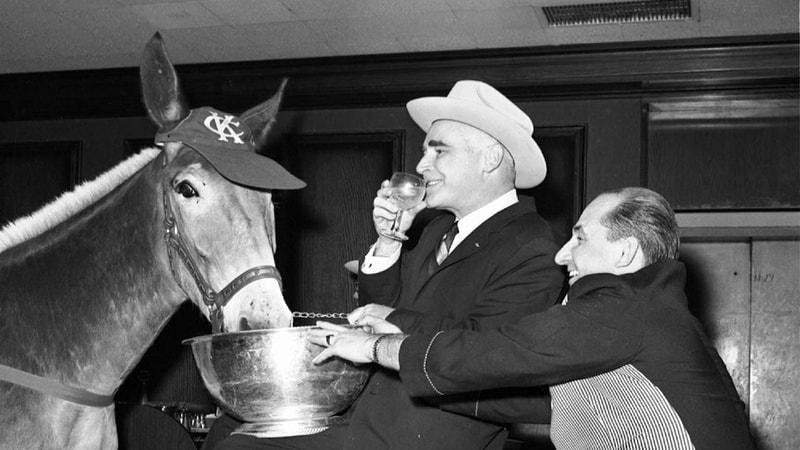
Today, Finley’s blunt candor has been replaced by somewhat more measured rhetoric.
Representatives of the Kansas City Chiefs and Royals have suggested they would consider other “options” if Jackson County voters on April 2 do not approve the sales tax that would help build the Royals a downtown stadium and upgrade the Chiefs’ Arrowhead Stadium.
“If the taxpayers say no, then they’ll look at all their options,” said Sly James, a former mayor of Kansas City and a consultant for the stadium tax campaign. “And all of those options are available to them… Four teams have moved, I think, in the last five or six years. Every one of them has moved because of stadiums.”
Some fans appear to have taken such remarks to be somewhere between empty threats and fighting words in trying to divine the teams’ true intentions.
In the case of the Royals and Chiefs, maybe those options would include comparatively local moves to North Kansas City, or suburban Kansas.
But the range of options could stretch to more scorched-earth scenarios such as Salt Lake City or San Antonio.
It’s inconceivable, some seem to believe, that either team would even consider leaving the Kansas City area.
“If this is voted down, the threat is that the teams are going to leave,” said Patrick Tuohey, co-founder and policy director with the Better Cities Project. “The teams aren’t going anywhere.
“I’ve lived in Kansas City long enough to know that if this is defeated, (Royals owner) John Sherman will be right back at the table with the county, maybe a little chastened, and he’ll be working on all these things, and we’ll be voting on this again in a year.”
Maybe. But the historical record suggests it’s not a sure thing.
When it comes to the migration of major league sports franchises, it’s not hard to find examples of big-time franchises leaving Kansas City for greener pastures:
- After the 1967 season, the Athletics really did leave Kansas City for Oakland.
- After the 1975-1976 season, the expansion Kansas City Scouts of the National Hockey League left for Denver.
- After the 1984-1985 season, the Kansas City Kings of the National Basketball Association left for Sacramento.
Those moves weren’t personal.
They were strictly business.
“If there are better deals elsewhere, the teams could leave,” said Jeff Katz, author of “The Kansas City A’s & the Wrong Half of the Yankees,” a 2007 book that detailed the Athletics’ unusual relationship with the dominant New York Yankees during the latter half of the 1950s.
“Sports history is filled with a misconception of what loyalty means. Fans assume that team ownership will be as loyal to them as they are to their team.
“We know that’s not true. All you have to do is talk to any of my still-living Brooklyn relatives to know that having a sense of security about having your own home-town team is a joke.”
The Stadium Tax Debate
‘Question of Loyalty’
In the history of major league sports franchises that have left one city for another, the 1957 decision of the Brooklyn Dodgers to move to Los Angeles, Katz said, was seismic.
So was the 1997 decision by the Houston Oilers to move to Nashville.
“The Oilers moving out of a football-playing state was a huge shock to Texans,” said Lloyd Johnson, past president of the Society for American Baseball Research, a national community of baseball scholars founded in 1971.
So, the Royals or Chiefs – or both – leaving Kansas City cannot be ruled out, he added.
“Salt Lake City already has passed a funding bill to attract a baseball team,” Johnson said. Perhaps the Royals would consider that city an option if the sales tax extension is not approved, he added.
While Johnson and other Kansas City area researchers, authors and entrepreneurs believe many scenarios remain possible, they debate how probable it might be.
They – along with so many others across Jackson County and the Kansas City area – have been pondering why or why not this or that may or may not occur.
“It could happen,” added Phil S. Dixon, a baseball researcher and author who in 1990 was one of 12 local residents who signed the nonprofit incorporation papers for Kansas City’s Negro Leagues Baseball Museum.
“If you don’t believe me, go over to St. Louis and ask the people there.”
Two National Football League franchises have left St. Louis in recent decades. The Cardinals moved to Tempe, Arizona, in 1988. And in 2016 the St. Louis Rams – a team that had played in Los Angeles from 1946 to 1994 before moving to St. Louis – returned to Los Angeles.
Anything is possible, said Jeff Logan, who operates Crown Sports Memorabilia and Cards in Lenexa. But he doesn’t think the Royals would find the same hot market as did Finley’s Athletics in 1967.
“Back then there were cities desperate for baseball,” Logan said.
“I don’t think cities are quite as desperate right now. The Diamondbacks want to leave Phoenix. Miami would love to get out – they only attract about 8,000 fans a game. And the Chicago White Sox just threatened to leave if they don’t get a new stadium.”
The White Sox have played in Chicago since 1901.
“But who knows?” Logan said.
Troy Treasure, the author of “Icing on the Plains: The Rough Ride of Kansas City’s NHL Scouts,” said he would be “stunned” if the Chiefs would leave.
“I hope I’m not being naive,” he added.
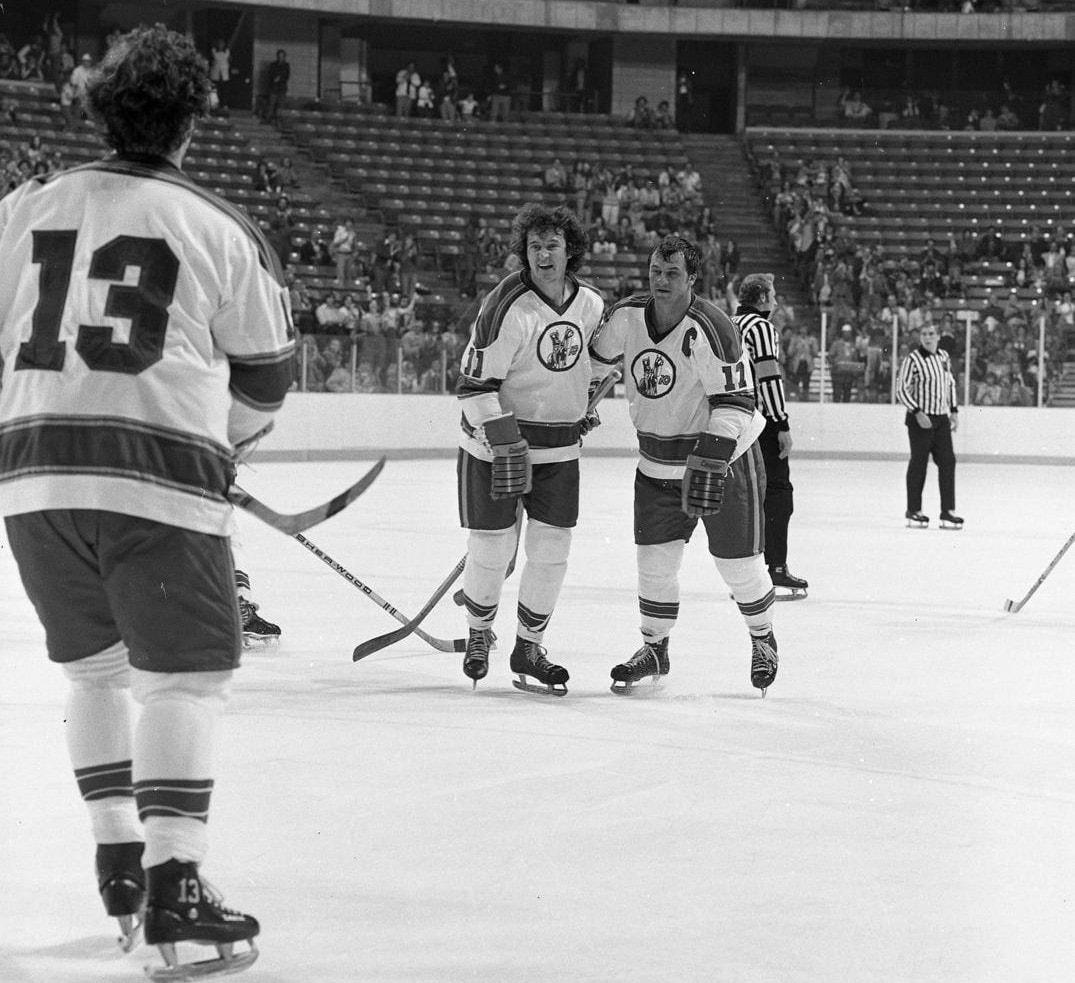
It may not be exactly naiveté being shown by those who believe neither team would leave, said Bill Carle, a longtime Kansas City baseball researcher.
“But if you have never had a team leave in your lifetime, maybe you don’t have any frame of reference for it,” he said.
The current angst seems a timely reminder that professional sports franchises are businesses, and those who own or operate them have their own priorities, said Katz, who also, from 2012 to 2018, served as mayor of Cooperstown, New York, home of the National Baseball Hall of Fame and Museum.
“This question of loyalty to a team is something that needs to be investigated,” Katz said.
Fans must be clear-eyed about their own emotional investment in what first is a business enterprise, added Tim Rives, a Kansas City area baseball scholar who has studied the Kansas City Packers of the Federal League, which only played two years, in 1914 and 1915.
Those fans who enjoyed riding streetcars to Gordon & Koppel Field near what is now Tracy Avenue and East 47th Terrace, just north of Brush Creek, to cheer on the Packers may not have considered at length why the Federal League had been established.
Its operators, Rives said, wanted to challenge the dominance of the established National and American leagues.
While the Federal League ceased operations following the 1915 season, litigation continued for several years until the U.S. Supreme Court, in 1922, ruled that major league baseball did not engage in interstate commerce and so was exempt from a federal statute that prohibited activities that restricted competition in the marketplace.
“The court ruled that baseball was more of a cultural institution than a business one,” said Rives, a retired deputy director of the Dwight D. Eisenhower Presidential Library, Museum & Boyhood Home in Abilene, Kansas.
Kansas City sports fans who insist on believing that remains the case today do so at their own peril, Rives added.
Their collective emotional investment in a sports franchise may not always be reciprocated.
“The Chiefs’ stock is as high now as perhaps it will ever be and so it’s probably the time to try to leverage whatever they can from the community,” Rives said.
“But what about all those years when the Chiefs stunk, and the community still supported them? There is no loyalty to the fan base, or even to the players. If the Chiefs thought that they could do better by replacing Patrick Mahomes, Travis Kelce and Chris Jones, they would do it, despite what they have accomplished over the last few years,” Rives said.
“That is the hard reality of the business aspect of professional sports. Don’t get too attached to your team, because it will take more than your love to keep your team in town.”

A Baseball Tragedy
Among scenarios where teams have left cities, the Athletics’ departure from Kansas City offers an especially cautionary tale, said Katz.
“When I think about the Kansas City A’s, I don’t know if there is a sadder story,” he said.
When the former Philadelphia Athletics, one of baseball’s storied franchises, with championship runs before and after World War I, arrived at the Kansas City Municipal Air Terminal on April 11, 1955, some 500 fans applauded each player as he was introduced while exiting the plane they had arrived in.
Then they rode through a parade downtown.
Although they defeated the Detroit Tigers the following day, the team finished the season with 63 wins and 91 losses, good enough for sixth place in the eight-team American League, 33 games behind the pennant-winning New York Yankees.
Despite such poor on-field performance, the Athletics’ attendance was the second in the America League, trailing only the Yankees.

“But then attendance began to drop,” Katz said.
That reflected results on the field. In 1956, the A’s won 52 games and lost 102 games, leaving them in last place, 45 games behind the Yankees.
The team’s performance declined in part because of the business relationship between A’s owner Arnold Johnson and several Yankees executives.
In the five years between 1950 to 1954 the Yankees traded players 28 times with other major league teams, but only twice with the Philadelphia A’s.
For the five seasons under Johnson’s ownership in Kansas City, from 1955 through 1959, the Yankees made about the same number of trades – 29 – with other teams.
But 16 of those transactions were with the Kansas City A’s.
Further, those trades often seemed to work out better for the Yankees. Most notably, the A’s traded Roger Maris to the Yankees in 1959, just two years before he broke Babe Ruth’s single-season homerun record.
“For those five years, the Kansas City Athletics are the minor league Yankees,” Katz said.
Soon after Charlie Finley bought the Athletics after Johnson’s death in 1960, he torched a bus in a Municipal Stadium parking lot for the benefit of photographers, insisting the years of shuttling talented players to New York was over.
Finley’s team still finished last three times, ninth twice, eighth once and seventh once.
Even so, there apparently are enough A’s enthusiasts today to support a replica apparel market. They can, for example, order a brand new “vintage” 1963 green satin Kansas City Athletics windbreaker for $130.
For those who insist on authenticity, an eBay vendor has been advertising what is purported to be an authentic 1955 Kansas City Athletics home jersey for $2,499.
If Finley remains a villain to some Kansas City area baseball fans, many retain fond memories of his stunts and promotions. (Among other things, he brought the Beatles to play at Municipal Stadium in 1964.)
Finley also instituted a sheep meadow beyond the right field fence, with actual sheep and herder. He changed team uniforms to variations of green, gold and white. And in 1965, he introduced a mule named Charlie-O, a team mascot that would be brought to games in an air-conditioned trailer.
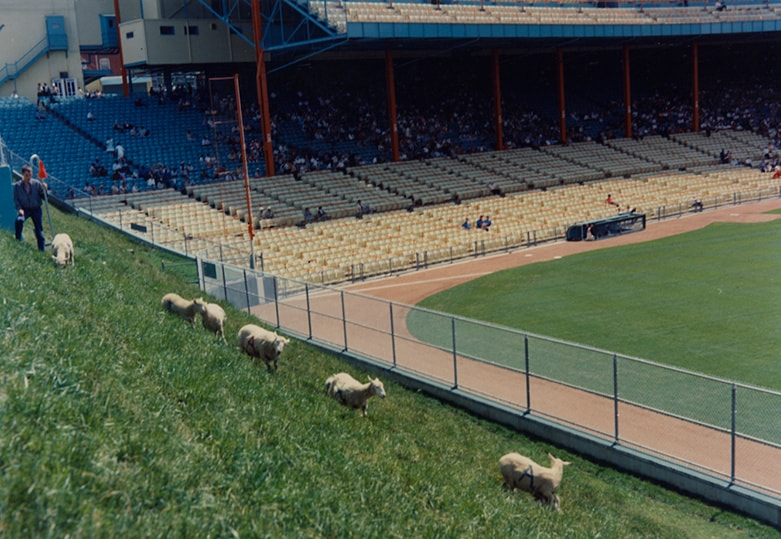
Sometimes the Athletics also would schedule bat giveaways.
The Athletics’ bats were green and today, even though the Athletics played their last game in Kansas City 56 years ago, they remain collectible. One of those green bats, bearing the name of Rocco Domenico “Rocky” Colavito, who played just one season for the Athletics in 1964, was priced at $250 in Jeff Logan’s Lenexa store this week.
“It’s nostalgia,” he said of the bats’ appeal.
“I think collectors covet these bats because they take them back to when they were kids. When they got this bat, they didn’t go home and mount it on a wall.
“They took it outside and played baseball with it.”
In the end, Athletics’ fans had their green baseball bats, but not their Athletics.
“Finley was a Chicago guy,” Katz said.
“He had no attachment to Kansas City. He just wanted a team. Before Kansas City he had tried to get the teams in Chicago or Detroit.
“So, the idea that this guy was going to come in and be a Kansas City stalwart was false from the beginning.”
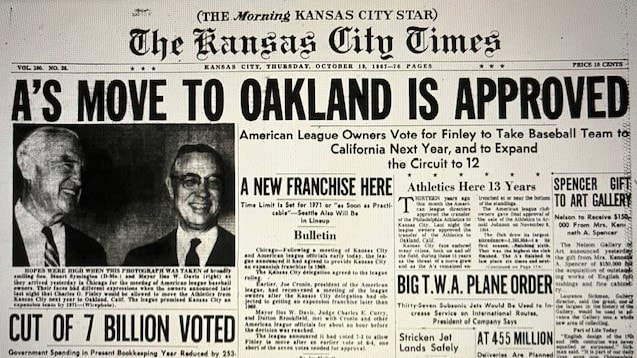
Three Departures
There was one common reason, all agree, why the Athletics, Kings and Scouts left Kansas City.
They weren’t very good.
“The A’s during their entire existence in Kansas City never had a winning season,” said Bill Carle.
Phil S. Dixon never saw the Athletics play in Kansas City’s Municipal Stadium.
Growing up in Kansas City, Kansas, he was 10 years old when the Athletics began their last season in Kansas City.
That year the A’s finished in last place, 29.5 games out of first place.
“I could never get anyone to take me to the games,” Dixon said.
The Kansas City Scouts also had a poor record, winning only 27 games while losing 110 and tying 23 over two seasons.
But there were other reasons the Scouts struggled in Kansas City, said Troy Treasure.
“The team didn’t do a very good job of getting players out to public appearances,” he said.
“Also, there was no deep-pocketed owner to carry the franchise through lean times.”
The 1970s fit that description, featuring a high rate of inflation, with interest rates rising to about 20%. During the decade’s first “oil crisis,” the average retail price of a gallon of regular gasoline rose 43%, increasing from 38.5 cents in May 1973 to 55.1 cents in June 1974.
“I can still remember my parents complain about gasoline prices,” said Treasure. “And our car was one of those infamous Ford Pintos.”
After the 1976 season the Scouts, re-named the Colorado Rockies, played in Denver until 1982, when they moved again, this time to New Jersey, where they today compete as the New Jersey Devils.
The Kings of the NBA moved to Kansas City in 1972 from Cincinnati and enjoyed some success, reaching the 1981 Western Conference finals before being eliminated.
But they had their own run of bad luck and poor front office performance.
Starting in 1972, the team split its home games between Kansas City and Omaha. They continued to play some games in Nebraska through the 1977-1978 season.
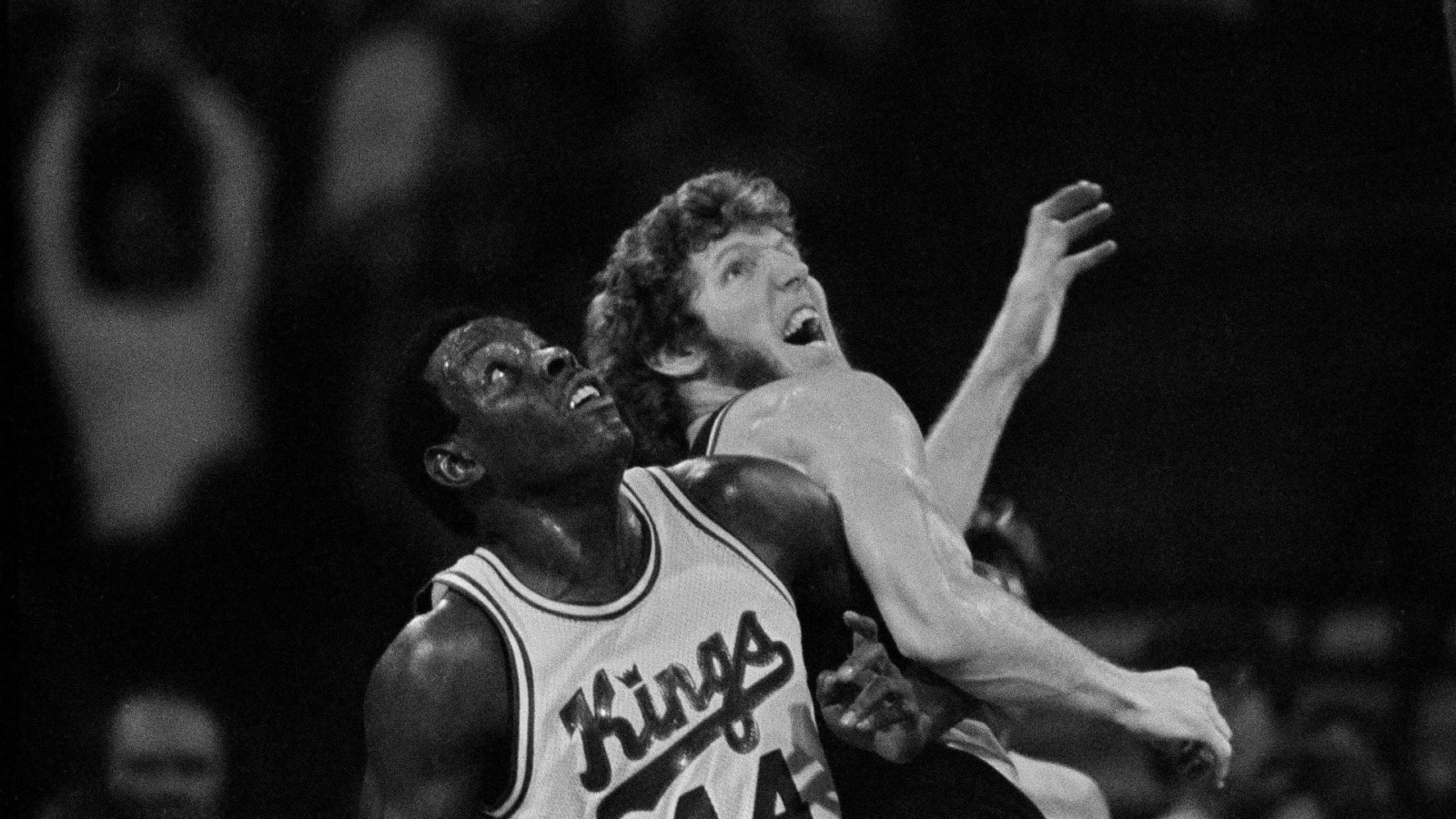
In Kansas City the Kings had first played in Municipal Auditorium before moving to the newly built Kemper Arena in 1974.
A 1979 roof collapse at Kemper prompted the team to return to the smaller Municipal Auditorium.
In 1980 the Kings fired its general manager after learning he had paid half-price for $240 worth of used postage stamps without cancellation marks.
In the team’s last season in Kansas City, in 1984-1985, the Kings won 31 games while losing 51, and attendance suffered.
In 1983 a Sacramento group bought the franchise and suggested the team could stay in Kansas City. But a five-year option was not exercised following the end of the existing lease in 1985.
NBA team owners approved the move of the franchise to Sacramento later that year.
That wasn’t long after the rookie season of Michael Jordan, whose career with the Chicago Bulls would bring unprecedented popularity to the NBA.
Meanwhile, the move of the Athletics to Oakland carried a cruel and unusual twist for the team’s Kansas City fans.
From 1972 through 1974, the A’s would win the World Series three straight times, with many of the same athletes who had spent rookie seasons in Kansas City, such as Reggie Jackson and Sal Bando.
The winner of the 1974 American League Cy Young award – Jim “Catfish” Hunter – was the same pitcher who had shut out the Chicago White Sox, 4-0, at the Athletics’ last Kansas City home game on Sept. 27, 1967.
The Kansas City Royals, an expansion team, replaced the A’s beginning in 1969. The city wasn’t so lucky after it lost its NHL and NBA franchises.
Even the Kings, despite their mediocrity, took popular players with them to California in 1985.
Those included University of Missouri guard Larry Drew, who would play for 10 years in the NBA, and Eddie Johnson, a jump shot specialist who would play for 17 seasons.
Today it remains cold comfort for some that between 2006 and 2022, the Kings suffered through 16 consecutive losing seasons, the most in NBA history.
Bill Carle, who attended Kings games in the 1980s, is aware of that.
“I will admit,” he said, “that, ever since they moved, I have been perfectly fine with the Sacramento Kings being lousy.”
Flatland contributor Brian Burnes served as a Kansas City Star reporter from 1978 through 2016.



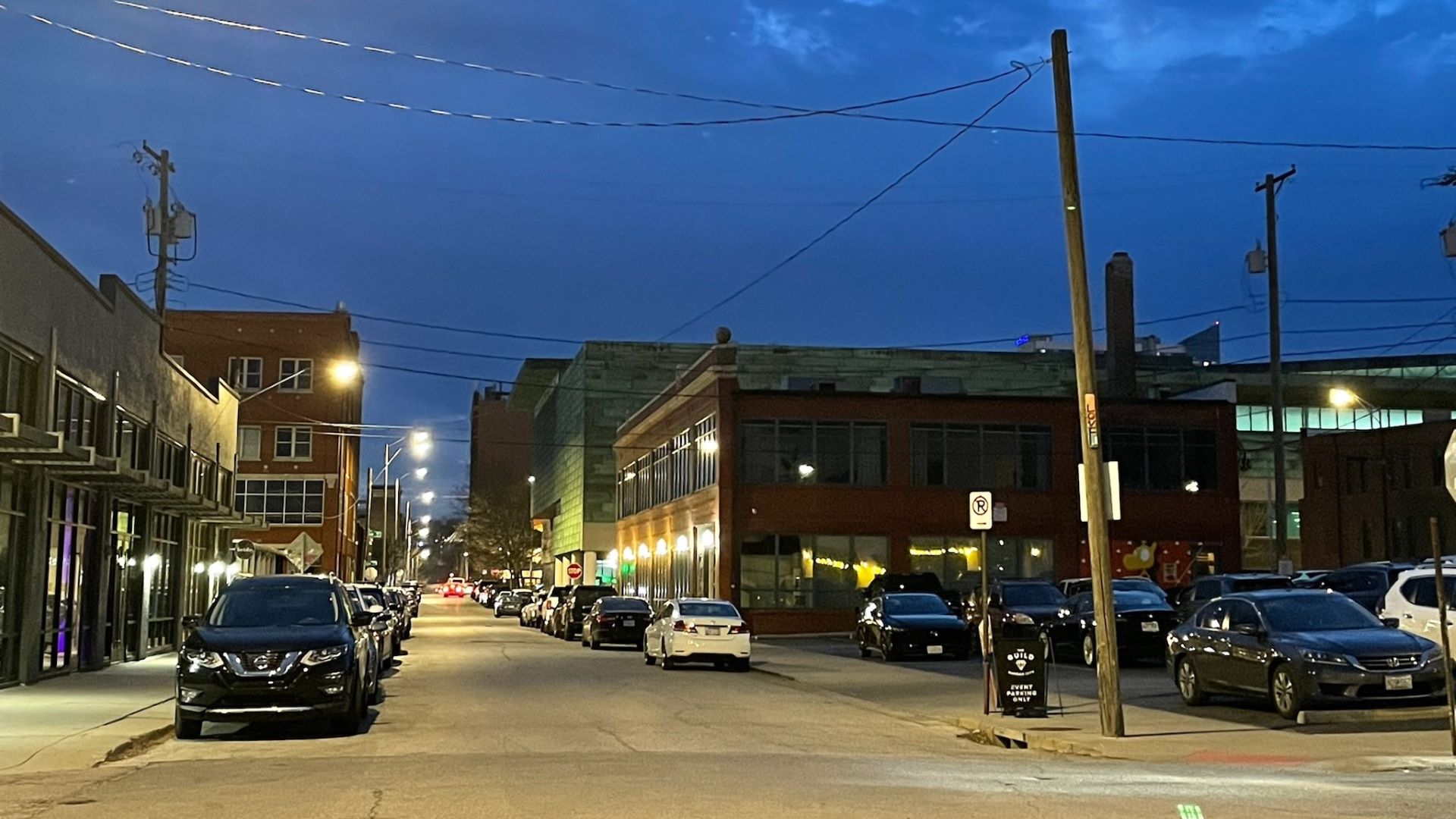






These stories are silly. Mentioning WW I and the 70s and 80s and teams moving are your basis for threats. “Back in the day there was an opening and the team moved.” It’s Jackson Counties fault to allow something to decay and not saving for improvements. Instead, they let it go years and years then all of the sudden we have to listen to threats of teams leaving. The fields take in millions. Why doesn’t a portion go toward improvements or more? Millions of dollars slip through their hands but it’s our fault if things don’t go right huh? I think Jackson County is horribly mismanaged if they can’t do this without that “small” tax increase… then I think the county supervisors need to resign. We have been taxed and taxed. Let’s see a tax decrease for a change and let the millionaires figure out how to pay for the stadium remodels and future stadium to be built. Quit spending our money.